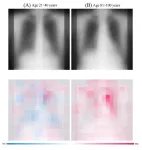(Press-News.org) Introduced foxes, dogs, cats, rats, and other predators kill millions of native animals every year, but what if they were conditioned to associate this prey with food that made them ill?
A team of international researchers have shown the potential to do just that, burying baits containing capsules of levamisole, a chemical that induces nausea and vomiting when consumed by predators.
In a world first experiment conducted in south-eastern Australia, where introduced red foxes are responsible for countless wildlife deaths, the Australian National University (ANU) and University of South Australia scientists laid baits of fried deboned chicken, with some containing encapsulated levamisole to hide the taste and smell of the chemical that makes animals nauseous or sick.
Over three sequential periods, untreated baits were laid, followed by levamisole-containing baits and untreated baits again. During the final period baits taken fell by 30%, indicating that foxes had consumed the levamisole-containing baits, fallen ill, and were reluctant to go back for seconds, despite the later absence of levamisole.
Researchers say this evidence shows it is possible to condition foxes to avoid food sources based on their unique odour, and ultimately this strategy may be applicable to protecting vulnerable wildlife living in that habitat.
The non-lethal tactic for keeping predators at bay could be potentially more effective than shooting, trapping and poison baiting in certain contexts, according to ANU PhD student Tim Andrewartha.
“Based on our findings, this potential is something we hope to explore in the future,” Andrewartha says.
UniSA researcher Associate Professor Anton Blencowe says invasive predators are responsible for almost 60% of all bird, mammal, and reptile extinctions globally, so it’s critical to find ways to mitigate their impacts on native wildlife.
“Existing lethal control methods – shooting, trapping, and poisoning can be counterproductive in some situations, with predators capable of adapting their behaviour and becoming harder to control,” he says.
The tactic employed in this experiment, known as conditioned taste aversion (CTA), shows promise as a tool to reduce the predation of vulnerable wildlife, the researchers outline in a paper published this month in Conservation Science and Practice.
A range of encapsulated nausea-inducing agents can be injected into food sources, such as eggs or animal carcasses, so the predator associates the symptoms with the food odour and not the chemical.
Microencapsulation, where the agent particles are minimised, can also be used to hide textures and prevent the capsule from being accidentally broken open during consumption.
Scientists say more research is needed to determine the best chemical and dosage used, whether live prey rather than a carcass are more effective at conditioning aversion in the red fox, and the time between consumption and onset of symptoms.
Notes for editors
“Landscapes of nausea: Successful conditioned taste aversion in a wild red fox population” is published in Conservation Science and Practice. The study was led by the Australian National University in collaboration with the University of South Australia, the University of Tokyo, and James Hutton Institute, UK.
END
Nauseous territory: outfoxing predators using baits that make them barf
2023-08-17
ELSE PRESS RELEASES FROM THIS DATE:
Accelerating discovery in artificial intelligence for science
2023-08-17
What if artificial intelligence (AI) could be used to spur discovery in areas such as biotechnology, drug discovery and fluid dynamics? Using geometric graphs and innovative methodologies, AI can solve fundamental problems in basic natural science. The possibilities are endless in this relatively new field known as AI for science.
Dr. Shuiwang Ji, a professor in the Department of Computer Science and Engineering at Texas A&M University, recently received a National Science Foundation grant to ...
Sylvester Surgeon-scientist awarded center’s first Department of Defense grant to study pancreatic cancer
2023-08-17
MIAMI, FLORIDA (Aug. 17, 2023) – Researchers with Sylvester Comprehensive Cancer Center at the University of Miami Miller School of Medicine have been awarded a grant from the U.S. Department of Defense (DoD)’s Congressionally Directed Medical Research Program to target chemotherapy resistance in pancreatic cancer.
The $800,000, three-year grant is the first DoD award to Sylvester to study pancreatic cancer, a disease characterized by extreme resistance to chemotherapy and other treatments and dismal survival rates.
Pancreatic ductal adenocarcinoma is the most common and aggressive ...
Novel treatment based on gene editing safely and effectively removes HIV-like virus from genomes of non-human primates
2023-08-17
(Philadelphia, PA) – A single injection of a novel CRISPR gene-editing treatment safely and efficiently removes SIV – a virus related to the AIDS-causing agent HIV – from the genomes of non-human primates, scientists at the Lewis Katz School of Medicine at Temple University now report. The groundbreaking work complements previous experiments as the basis for the first-ever clinical trial of an HIV gene-editing technology in human patients, which was authorized by the Food and Drug Administration (FDA) in 2022.
The preclinical study, published online ...
Urban great tits have paler plumage than their forest-living relatives
2023-08-17
As urban areas expand, animals increasingly find themselves living in towns and cities. While some animals may benefit from milder temperatures and fewer natural predators in urban settings, they also have to cope with pollutants and changes in their diet. Previous research has shown that animals in cities are “duller” in terms of yellow-orange-red colour tones compared to their non-urban counterparts. However, previous studies have only focused on single geographic locations.
“We used feather samples collected from great tits in cities and forests across Europe. Different methods all confirmed that urban great tits ...
Our plastic waste can be used as raw material for detergents, thanks to an improved catalytic method
2023-08-17
(Santa Barbara, Calif.) — We’ve managed to accumulate so much plastic trash that it’s daunting to think about what could be done with the tons upon tons of nonbiodegradable waste. And as much as we are trying to scale back our dependence on single-use plastics, we continue to add to the global plastic trash hoard. Events like the COVID-19 pandemic only served to expand their use for personal protective equipment and disposable and take-away packaging.
But, for researchers at UC Santa Barbara, one person’s single-use packaging ...
Why killer bacteria affect some people more severely
2023-08-17
Group A streptococci are fairly common bacteria that can cause, among other things, strep throat or impetigo. However, if the bacteria become invasive, the situation can become very dangerous. In this case, the name sometimes changes to murder bacteria or flesh-eating bacteria and can give rise to life-threatening conditions such as blood poisoning and septic shock, or soft tissue infections that may make an amputation necessary.
Invasive streptococcal infections have increased in recent decades. The reason for this is not fully understood.
The outcome of infections can ...
Risk of cancer death after exposure to low-dose ionising radiation underestimated
2023-08-17
Prolonged exposure to low-dose ionising radiation is associated with a higher risk of death from cancer than previously thought, suggests research tracking the deaths of workers in the nuclear industry, published in The BMJ today.
The findings should inform current rules on workplace protection from low-dose radiation, say the researchers.
To date, estimates of the effects of radiation on the risk of dying from cancer have been based primarily on studies of survivors of atomic bombs dropped on Japan at the ...
Smartphone app may support drinkers who overindulge to drink less heavily
2023-08-17
Access to a smartphone alcohol intervention app helped university students to cut down their overall alcohol consumption and the number of days they drank heavily, suggests a study published in The BMJ today.
Unhealthy drinking is the biggest risk factor to health for 15 to 49-year olds, and unhealthy use of alcohol is especially prevalent among adult students, prompting the authors to design a smartphone app to encourage healthier drinking among this group.
The authors tested the app in 1770 university students who had screened positive for ...
THE LANCET: Levonorgestrel emergency contraceptive pill is more effective when taken with an anti-inflammatory medication, study suggests
2023-08-17
*Please see end of press release for a link to the embargoed content*
Peer-reviewed / Randomised Controlled Trial / People
A randomised controlled trial of 860 women requesting emergency contraception found 95% of pregnancies were prevented following combined treatment with levonorgestrel and the anti-inflammatory medication piroxicam, compared to 63% of pregnancies being prevented when levonorgestrel was taken alone.
This is the first randomised trial where piroxicam has been studied for its contraceptive action in humans.
The authors say, if these results can be reproduced in future studies, co-treatment with piroxicam and levonorgestrel ...
How old are you, really? AI can tell your true age by looking at your chest
2023-08-17
Osaka, Japan - What if “looking your age” refers not to your face, but to your chest? Osaka Metropolitan University scientists have developed an advanced artificial intelligence (AI) model that utilizes chest radiographs to accurately estimate a patient’s chronological age. More importantly, when there is a disparity, it can signal a correlation with chronic disease. These findings mark a leap in medical imaging, paving the way for improved early disease detection and intervention. The results are set to be published in The Lancet Healthy Longevity.
The research team, led by graduate student ...



